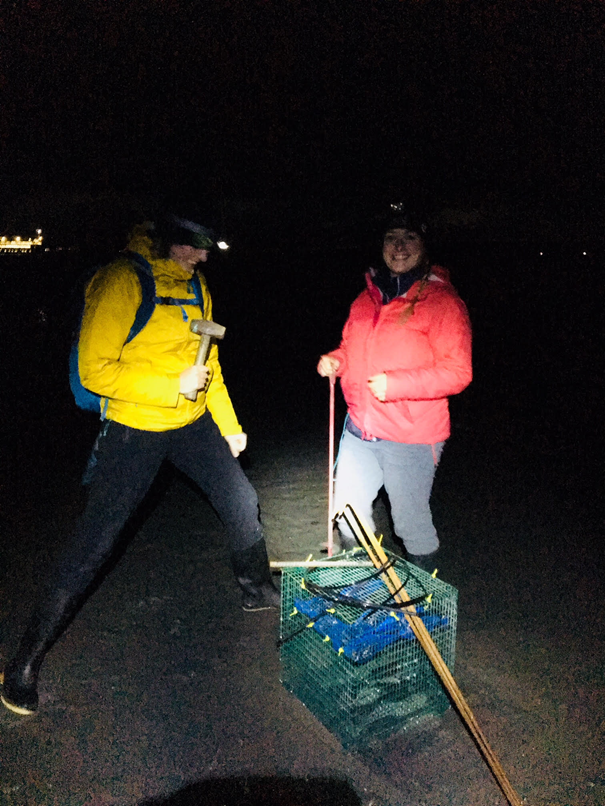On December 1, 2017, Port Townsend Marine Science Center volunteer Darryl Hrenko and I ferried over to Whidbey Island and made our way to Penn Cove to pick up a truckload of “mussel kits.” These kits were provided to PTMSC, as well as Jefferson County Marine Resources, the Jamestown S’Klallam Tribe, and Feiro Marine Life Center, to participate in the Washington Department of Fish and Wildlife’s Puget Sound Mussel Monitoring program.
That night at zero tide, PTMSC staff, AmeriCorps, and volunteers split into three groups, each heading out to a local site to deploy our mussels. In February 2018, the mussels will be collected, delivered to WDFW labs and tested for toxins.
Mussels are filter feeders so they accumulate toxins found in the water, and that helps scientists determine which toxins have been present in a given area since they have been there.
 |
| Nate Wold helping to light the way for Carolyn Woods as she attaches the mussels to their cage. |
 |
| Betsy Carlson and her son Gus Wennstrom |
The report from the 2015-2016 survey provides some context, stating that “stormwater [runoff] is considered one of the biggest contributors to water pollution in the urban areas of Washington State because it is ongoing and damages habitat, degrades aquatic environments, and can have serious impacts on the health of the Puget Sound. Monitoring pollutants and their effects on the marine biota of Puget Sound is critical to inform best management practices and remediation efforts in this large and diverse estuary (
http://wdfw.wa.gov/publications/01925/).”
 |
| AmeriCorps Mariah and Emilee excitedly getting ready to deploy their mussels. |
I am so excited that such an important project is utilizing the power of citizen scientists. I’m happy because it means that I get to be a part of this project and also because I think citizen science is an amazing tool for collaboration, outreach/education, and creating more opportunities for scientific discovery!
Written by AmeriCorps Citizen Science Coordinator Lily Evanston.










